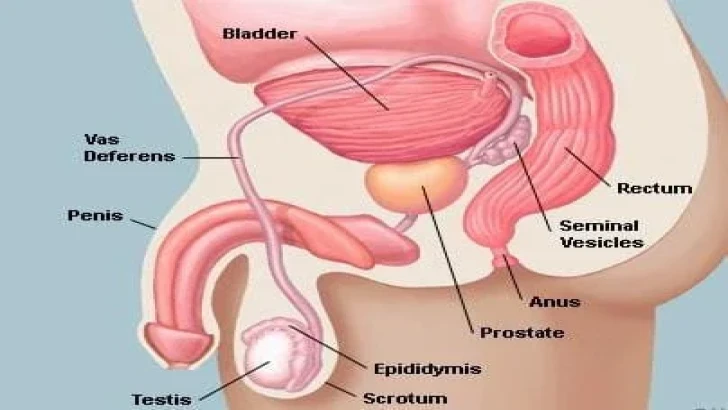
Even though penile cancer is not very common, for the best results, it has to be treated with care, awareness, and early intervention. This kind of cancer can take many different forms and damages the penis's skin and tissues. We'll explore the complexities of penile cancer in this extensive blog, including its signs, phases, therapies, and management techniques.
Penile Cancer: Symptoms, Stages & Treatment
Even though penile cancer is not very common, for the best results, it has to be treated with care, awareness, and early intervention. This kind of cancer can take many different forms and damages the penis's skin and tissues. We'll explore the complexities of penile cancer in this extensive blog, including its signs, phases, therapies, and management techniques.
What is penile cancer?
When cancerous cells in your penis grow out of control, penile cancer develops. You may urinate and engage in sexual activity using your penis, a rod-shaped reproductive organ. The head, or glans, is the rod-like portion (shaft) that connects your low belly to the tip of your penis. The head is covered in a layer of skin known as the foreskin if you are not circumcised and visible.
Penile cancer is less than 1% of all cancers in males, yet it may still have a major emotional and physical impact.
What are the types of penile cancer?
Penile cancer can take many different forms, all of which are caused by distinct kinds of cells found in the penis. This kind of cancer develops in the epithelium, the uppermost layer of your skin. Other, less common forms of penile cancer occur in different tissues:
Squamous Cell Carcinoma About 95% of cases of penile cancer are of the most common kind, squamous cell carcinoma. It begins in the squamous cells that coat the penis, which are flat and resemble skin. This cancer can start anywhere on the penis and typically appears as a little sore or growth like a wart. It is frequently detected on the glans (head) or foreskin.
Basal Cell Carcinoma (BCC) The basal cells, which are found in the outermost layer of the skin, called the epidermis, are the source of basal cell carcinoma. Compared to squamous cell carcinoma, this kind of cancer is far less prevalent. It generally appears as a tiny, painless lump or sore that may bleed.
Melanoma The melanocytes, which produce the pigment known as melanin in the skin, are the source of melanoma, a kind of penile cancer. Melanoma is more aggressive than other forms of penile cancer, while being extremely uncommon in the penis. It often appears as a black, colored tumor that spreads quickly to other body areas
Sarcoma Penile sarcomas come from connective tissues, including smooth muscle, blood vessels, and other soft tissues. Depending on the kind of tissue they originate from, these extremely uncommon tumors might have rather different characteristics. Sarcomas can cause swelling or lumps, and they can act aggressively.
How common is penile cancer?
When compared to other types of cancer, penile cancer is an extremely rare disease. In men in the US and other Western nations, it makes up less than 1% of all cancer cases. Penile cancer incidence varies around the world, with certain parts of Africa, Asia, and South America showing greater rates than others.
What is the average age of penile cancer?
Most persons with penile cancer are 60 years of age or older when they are initially diagnosed. Age is not a factor in its diagnosis; older males are most frequently affected. Penile cancer is more common in older adults, especially in males over 50.
Symptoms and Causes
What are the symptoms of penile cancer?
Penile cancer typically results in a change in the appearance of your penis, while not all cancers produce visible change. On your penis, you could notice a lump and skin discoloration. Growths or non-healing sores on the penis, particularly on the glans (head) or foreskin.
Unusual changes in the penis's skin tone, such as reddening or darkening, might be signs of cancer.
The penis's skin may get thicker or feel more stiff.
The existence of bumps or lumps that might hurt or not.
Inexplicable bleeding from the penis, especially during sexual activity.
Abnormal discharge, sometimes odorous, from behind the foreskin.
Pain or discomfort, particularly during sexual activity or when peeing.
An enlargement of the genital area brought on by swollen lymph nodes.
What causes penile cancer?
A tumor forms in the penis as a result of healthy cells changing and growing out of control, leading to the development of penile cancer. Cancer cells have the ability to spread to different areas of the body over time, harming organs and healthy tissue.
Major Risk Factors and Causes
1. Human Papillomavirus (HPV) Infection
HPV infection, particularly with high-risk types such as HPV 16 and 18, is one of the most significant risk factors for penile cancer. HPV can be transmitted through sexual contact and can cause cellular changes that may lead to cancer over time. Men with persistent HPV infections are at a higher risk.
2. Smoking
Smoking can cause great risk of penile cancer. Tobacco smoke contains carcinogens that can damage DNA in the cells of the penis, leading to cancerous changes. The risk is higher in men who smoke for long periods
3. Phimosis
Phimosis is a condition where the foreskin cannot be fully retracted over the glans (head) of the penis. Poor hygiene and chronic inflammation can increase the risk of penile cancer. Men with phimosis are advised to maintain good hygiene and seek medical advice if they experience persistent issues.
4. Poor Hygiene
Smegma, a material made of dead skin cells, oils, and moisture, can build up as a result of poor genital hygiene. It can cause chronic inflammation and increase the risk of penile cancer. Regular cleaning, especially under the foreskin, can reduce this risk.
5. Age
The risk of penile cancer increases with age, most commonly affecting men over 50. As men age, the likelihood of DNA damage in cells increases, potentially leading to cancer.
6. Uncircumcised Men
Men who are not circumcised have a higher risk of developing penile cancer. This is partly because circumcision reduces the risk of HPV infection and improves genital hygiene, thereby lowering the risk of chronic inflammation and cancerous changes.
7. Lichen Sclerosus
Genital lichen sclerosus is a long-term inflammatory skin disease. It can cause white patches, scarring, and thinning of the skin, increasing the risk of penile cancer. Men with this condition should have regular check-ups with their healthcare provider.
Living with Penile Cancer
Dealing with penile cancer involves not only physical treatment but also emotional and psychological support. Patients and their family may benefit from counseling and support groups. Open communication with healthcare providers about concerns and treatment options is essential for managing the disease.
Treatment Options for Penile Cancer
Treatment for penile cancer varies based on the stage and extent of the disease. Here are some common treatments:
1. Surgery:
Circumcision: Removal of the foreskin if the cancer is localized to this area.
Wide Local Excision: Removal of the cancerous tissue along with a margin of healthy tissue.
Glans Resurfacing: Removal and replacement of the surface layer of the glans.
Partial or Total Penectomy: Removal of part or all of the penis if the cancer is extensive.
Lymph Node Dissection: Removal of lymph nodes in the groin to prevent the spread of cancer.
Radiation Therapy:
External Beam Radiation: Targeted radiation to kill cancer cells in and around the penis.
Brachytherapy: Implantation of radioactive seeds directly into the tumor.
3. Chemotherapy:
Topical Chemotherapy: Applying chemotherapy drugs straight to the penile skin.
Systemic Chemotherapy: Use of drugs that circulate throughout the body to target cancer cells.
4. Laser Therapy:
Using high-intensity light to destroy cancer cells. This method is often used for superficial penile cancers.
5. Immunotherapy:
Strengthening the immune system to combat cancerous cells. This approach is still being studied but has shown promise in treating various cancers.
Procedures for Penile Cancer Treatment
1. Biopsy:
A biopsy involves removing a small sample of tissue from the affected area for examination under a microscope. This is crucial for diagnosing penile cancer and determining its type and stage.
2. Imaging Tests:
Tests like CT scans, MRI, or PET scans help determine if cancer has spread to other parts of the body. These imaging tests provide detailed pictures that aid in staging the cancer.
3. Lymph Node Evaluation:
Sentinel Lymph Node Biopsy: This procedure helps identify the first lymph node to which cancer is likely to spread. It involves injecting a dye near the tumor and tracking its path to the lymph node.
4. Penectomy:
Partial Penectomy: Removing part of the penis while preserving as much as possible.
Total Penectomy: Removing the entire penis. This is considered only when the cancer is widespread and other treatments are not viable.
Reconstructive Surgery:
Post-surgery, reconstructive procedures may be performed to improve the appearance and function of the penis. Techniques can include skin grafts and the use of flaps from other parts of the body.
Conclusion
Even though it is uncommon, penile cancer is a dangerous disease that has to be recognized and treated immediately. Effective management requires knowledge of the condition's signs, phases, and available treatments. For patients suffering from this illness, new developments in medical procedures and therapies provide improved outcomes and hope.
Kindly complete the form below, and our dedicated team will reach out to you promptly. We look forward to connecting with you soon!
Trierer Straße, 56072 Koblenz, Germany
.webp)
.webp)
 (1).webp)
 (1).webp)

.webp)
.webp)
 (1).webp)
 (1).webp)
